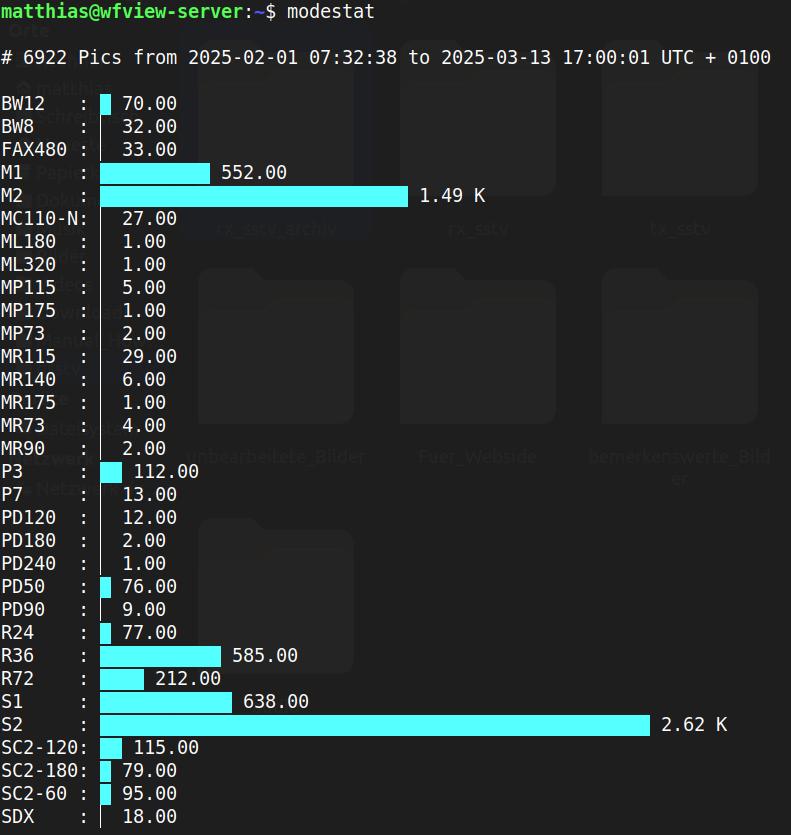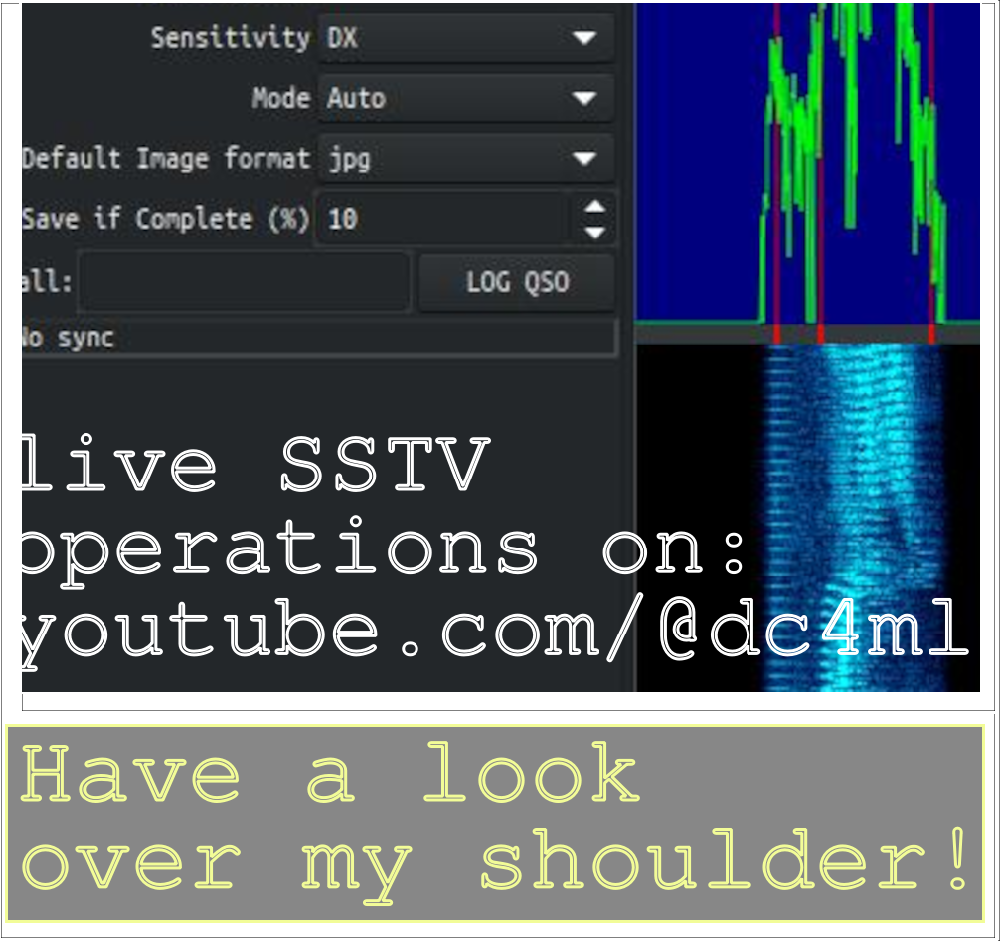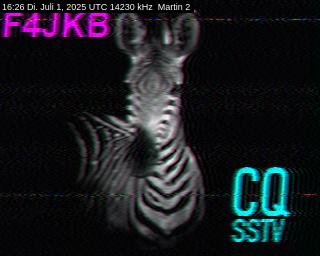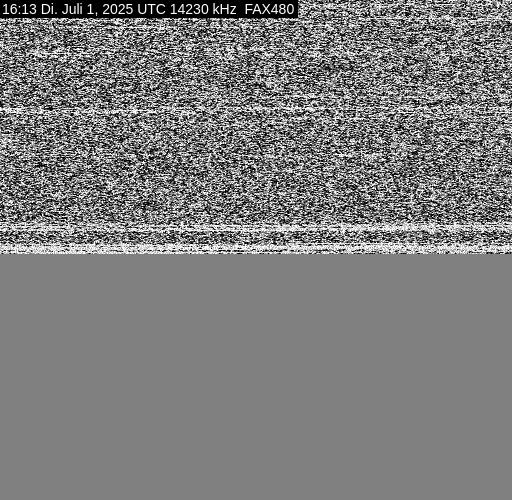Rig: IC7300, Software: qsstv 9.5.11 - settings: Auto-Slant "on"; sensitivity "DX"; mode "Auto"
Signal will run until the end of the image before resynchronization when something resembling H-sync or VIS is demodulated, no matter what was the souce. It's like an open squelch, even if only fractions of an image were received, these can be viewed in the gallery; where the displayed aspect ratio corresponds to the respective mode.
When you see my images, TX-Power is about 100 Watt, find logging and QSL on qrz.com.
Antennas:
10m Day and Night / 20m Night:
20-meter Deltaloop,
20m Day:
80-meter-Loop 6 meter AGL.
No 24/7 monitoring!
Thank you qsl.net for hosting.
Here are statistics about the modes I received. If you want to know more about how these
statistics were created, or find out what you (as qsstv-user) receive most often:
 click here.
click here.


To be honest, I regret that such interesting and high-resolution modes as Pasokon P3 or FAX480 are used so rarely. The image
quality is amazing and in my experience P3 is much more robust than Martin 1 or Scottie 1 with poor propagation.
Hello, you who are reading this now: have fun and experiment with the many fantastic modes that are available to you!
p.s.
I have a request for my Canadian and North American friends: please, please, please use slow modes (at least M1 or S1, better Wraase SC2 180 or of course P3) until you find that the band is open and the signal strength is high enough for something faster (M2, S2, but probably not Robot 36)
It is frustrating for me to see that an image is being sent in S2 or M2 but I cannot recognize the call sign - I would really like to answer, but who?
Sometimes you get to your destination faster when you go slow.




























 click here.
click here.

